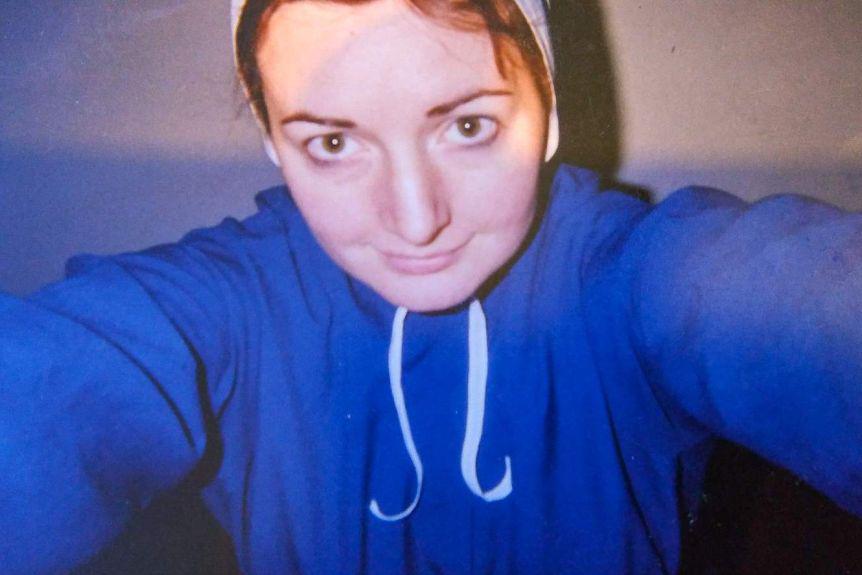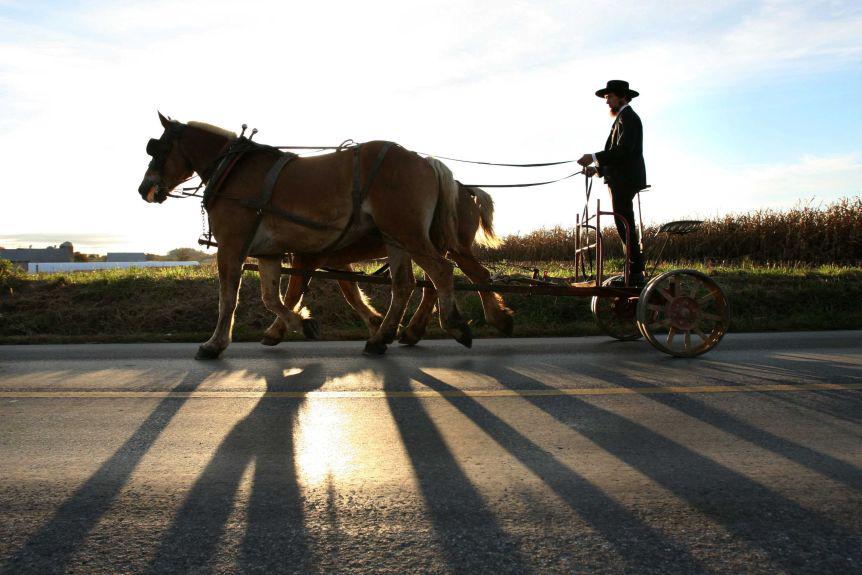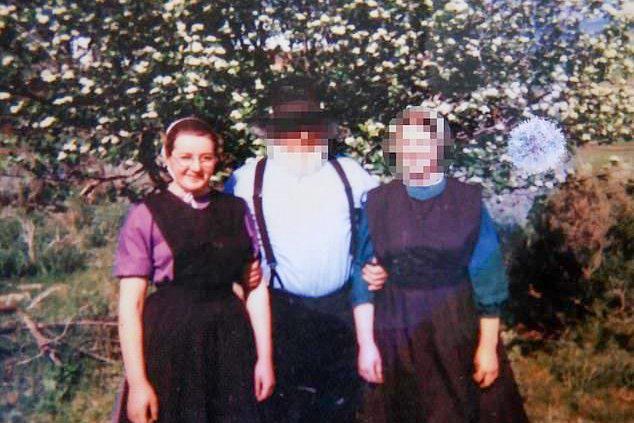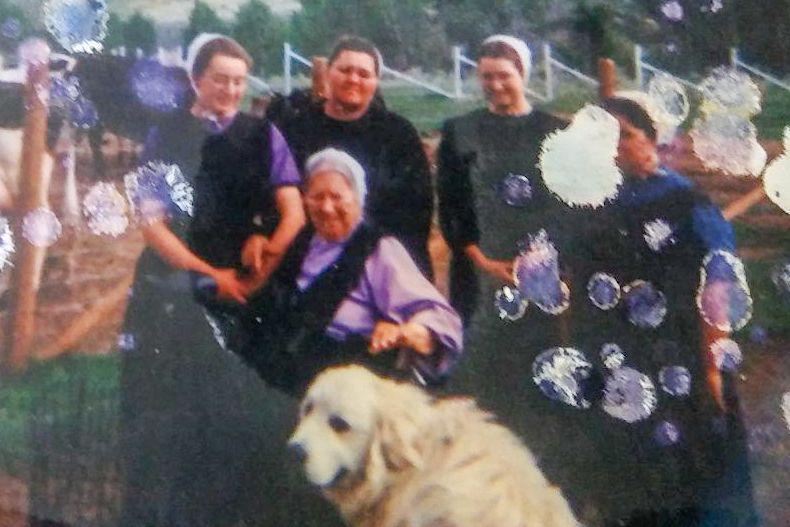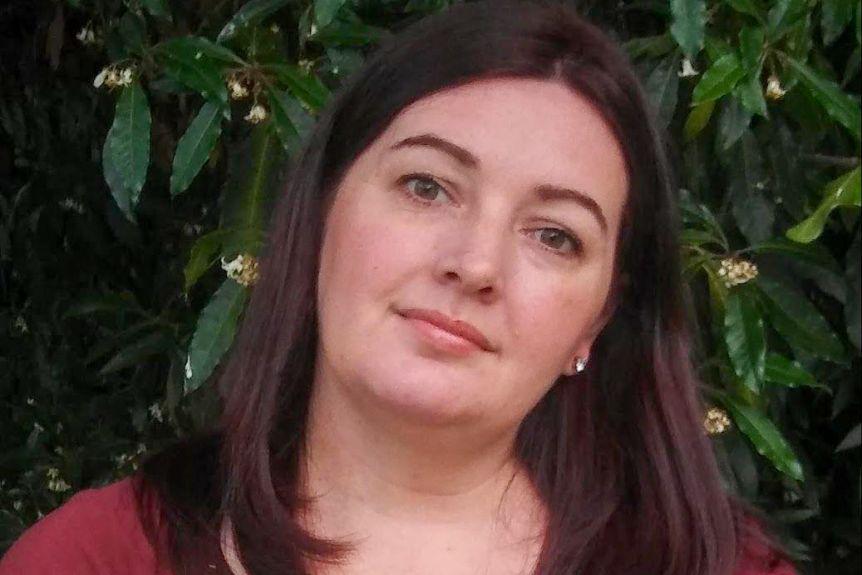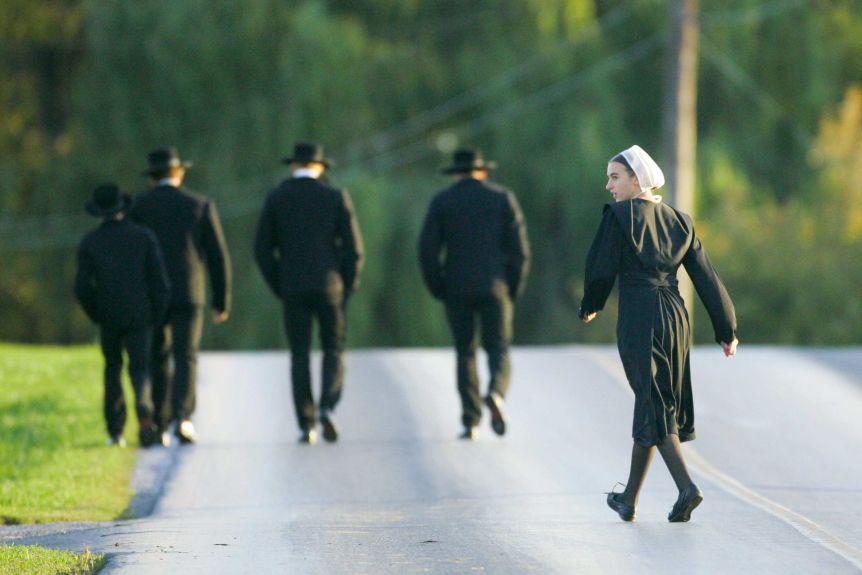|
A US Amish community dedicated to serving community was supposed to keep Misty safe. Instead it shielded her abuser
By Emily Olson
Misty Griffin really wants you to know her story. She has written a book. She's collaborated with podcasts. She's pitched to television producers, spoken with filmmakers and sent "more than 100 emails" to US journalists. She has politely, quietly, diligently reached out to me at least 29 times since our first email, to see if and when I could publish this piece. But it's not just about telling her story. What Misty wants most of all is for you to never hear a story like hers again. What she wants is for her story to become a rarity, a dinosaur, a defunct antique, the opposite of what journalists use at the beginning of an article to introduce a pattern. Misty wants to reform a system she believes is broken, to slow a harm she knows is perpetuating. She has an informed hunch that fixing a problem starts with getting a sufficient number of people to care about it. The trouble is, Misty's story is not an easy one to tell. For starters, the story begins in a slice of misunderstood space known as America's Amish country. The Amish are one of America's most insular communitiesThe Amish, like most religions, associate piety with surrendering to a set of rules. Unlike most religions, the rules are so at odds with modern ideals that the community is famously insular, even exempt from some US laws. There are over 300,000 Amish in the US and Eastern Canada, broken up into different church districts serving 10 to 18 families. There is no central power structure, and each of the roughly 2,400 districts are self-governing, laying out a plan for their district in what's called an "Ordnung". But there's a few things they have in common. The Amish can only wear clothes prescribed by the church. They must learn and speak a German-based dialect. They cannot pursue education past eighth grade, join the military or drive a car. Most of the communities forbid the use of computers, phones or electricity. Most Amish live in rural regions, requiring every member to earn their keep through crafts and chores. And at the heart of every decision they make is the principle of Gelassenheit, which translates to "yielding to others". Amish life is all about giving up individual autonomy for the good of the group, something that would cause your average American to slowly drown. For Misty, the prospect of group accountability looked as promising as a lifeboat. After being raised on an isolated farm by physically abusive parents, Misty was sent to join a small, 100-person Amish community at age 18. After years of a tough rural existence, she adapted quickly and, when it came to crafts like quilting, even excelled. And yet she "could always tell something was just wrong," she said. Her first 'mother' warned her against pinning her dresses too tight. Another woman spoke in whispers about what a grandfather had done to his own kin. For four years, she was able to look the other way, to keep her head down and follow the rules, reminding herself that an Amish life was far better than the childhood that'd left her physically scarred. Things changed when she was asked to serve as a live-in maid for a woman whose seizures made it difficult to care for seven children. The woman happened to be married to the highest-ranking church member. The advances started slowlyWhen Misty tells the story about what happened next, the story she wants you to know, she'll start with a warning about how there are still gaps in her memory. She remembers that the advances started slowly. The bishop would stare at her as she worked, she said. He brushed her breasts as she handed him the baby. He openly speculated that Misty would make a good replacement for his wife if she succumbed to her seizures. Then one night he summoned Misty into a dark room, where she says she found "the entire front of [his] pants open." "He wasn't wearing any underwear and he was fully erect," she says. The following morning — the start to her last day in the Amish community — is when things start to get fuzziest. She remembers falling asleep fully clothed, with her quilt pulled over her head, a futile shield for a community that sees no need for locks. And she knows the first thing she saw when she awoke was the bishop's face, peering down at her through the darkness. What happened to Misty next is still a mess of fragments — ugly, hurtful moments that strike her as randomly as lightning and linger like thunder in her nightmares. She does remember him standing when it was over, whispering that he'd be back the next day. 'No one can ever talk about what you did'Misty didn't know this at the time, but her church's Ordnung, the set of guiding rules, was strict even by Amish standards. The punishment for breaking any rule was the same. You'd confess before the church. Then the church leaders, a handful of older men, including the bishop, would decide if you'd be placed "in the Bann" and if so, for how long. The Amish speak out about the Bann like it's a prison, but it's not a physical space. It's a form of social shaming. "It does not mean that the other Amish can have nothing to do with the individual or cannot speak to him or her," explains Steven Nolt, a senior scholar at the Young Center for Anabaptist and Pietist Studies. Misty said that when the period of shunning formally ended, "you go back to your life and no one can ever talk about what you did. That's pretty much all it is". Misty would find out later that the bishop had been placed in the Bann before she'd gone to live with his family as a maid. He'd been molesting his own children for years. Six weeks of shunning hadn't exactly reformed him. Who could Misty tell? And what would happen, anyway?It was a matter of minutes after the bishop left that fears of pregnancy took reign of Misty's racing thoughts. But in a community with zero sex education, she says she risked punishment for even knowing how pregnancy occurred. Who could she tell? And what would happen, anyway? All Misty knew as the story was unfolding was that she didn't feel safe. She didn't believe the church was going to handle this the right way. So when morning came, she got dressed and decided she'd go to a non-Amish neighbour she was friendly with, hoping to get some advice. The bishop probably realised, too, that the outside world might be more sympathetic towards Misty. Because as she stepped through the door to leave, he grabbed her, dragged her to the side of the house and only increased his painful methods of restraints the more she tried to escape, Misty says. She broke free and sprinted to the neighbour. The neighbour quickly convinced her that going to the police seemed like the best, and only, option. But going to the police also meant breaking her church's rules by airing sins to external authorities. She knew she'd likely be the one facing punishment, not the bishop. In the end, the police told Misty there was little they could do without concrete evidence of what had happened. They sent officers to speak to the bishop but, from her neighbours' window, Misty saw them leave within minutes, waving to the bishop as they went. They would never follow up. Hiding at her neighbours house, Misty realised she only had one option left. That was leaving the Amish, the closest thing to safety she'd ever known A survivor's story transitioned Misty from isolation to solidarityWould Misty have fled so quickly had she not spent years watching abuse spiral? Would she have realised she had been wronged had she not grown up with books and magazines and a basic understanding of the laws governing non-Amish society? What would have happened had she not lived near that neighbour? Or not had an aunt to help her leave the Amish and start over? What if she'd been truly on her own? She doesn't really like to dwell in those questions. But she does. Because in the 15 years since it's happened, she's realised she is not alone in her experience. "I thought I was one of the first people to ever leave the Amish. In my church, you didn't hear about people leaving. After years of living in a place where community was everything, it was jarring for Misty to be out on her own. There are networks of ex-Amish who help those leaving the biggest church groups, teaching them to navigate everything from electricity to a drivers' license. For Misty, that sense of community came dozens of steps later, after she'd figured out how to use the internet. She read about a young woman named Mary Byler, who left the Amish after being sexually abused by her brothers. Mary's story attracted a bit of media coverage, in part because it went against America's stereotype of what Amish life was all about. "This was years before the #MeToo movement. No one talked about these things," Misty said. The similarities of their stories gave Misty a sense of solidarity, but also left her unable to shake this idea that there might be an Amish girl somewhere in need of the help she and Mary never received. Nine years after leaving the Amish, Misty self-published an account of her experience. "I was still working full-time. I had no money for an editor. I ended up with a memoir that was around 700 pages," she said. "But I thought it might help someone." The stories haven't stopped coming outThe comments, emails and letters started pouring in. Friends of the Amish, ex-Amish, current Amish — Misty has lost track of how many people have told her they know about sexual abuse occurring in the Amish community. Each story touches her in a fresh way, provoking a flood of emotions. But none more so then the one that came from the oldest daughter of the bishop. The note reached her a few years after she published her book, just a quiet comment on a social media page she stumbled on while procrastinating on her university studies. The family had fled the Amish community shortly after Misty left, possibly because they feared prosecution. They spent years bouncing from state to state, finally settling in with a Seventh-Day Adventist community, which shares Christianity but little else in common with the Amish. It was then that the bishop's oldest daughter found an ally, a friendly new church member, to disclose that she'd been abused by her father for years. The woman went to child protective services. The bishop, who pleaded guilty to child molestation, is currently serving a 10-year prison sentence. Six of the children said he had abused them. They now live under custody of the oldest daughter, safe and healing, far away from the Amish. The next #MeToo waiting to happen?The stories she hears have only motivated Misty to push harder to get her own story out there. "I think it's going to take outside pressure on the Amish for things to change. The problem is that so many men are the abusers and they have all the power." To Misty's mind, the story of the Amish echoes so many of the #MeToo bigshot investigations the media has published. "But the news organisations just don't want to touch it. They just don't. One problem is that storytellers operate under rules too, and stories about the Amish are quite tricky to verify. Misty's story is one of those. Court documents detailing the bishop's arrest describe "a young girl who lived with [the bishop] and at the time reported [the bishop] was molesting her," but Misty is never explicitly named. The police that Misty contacted before leaving the Amish told me they don't keep records for more than seven years. And the people who could verify her story are either 1) still in the Amish, and therefore only contactable in-person or by letter or 2) they're people who Misty is uncomfortable putting me in contact with for reasons that feel legitimate. They are people she says abused her, or people who are recovering from their own abuse and not ready to come forward. The problem feels too complex to measureIn the end, Misty's story is just one story. Most Amish people don't have phones or computers. They're discouraged from sharing sinful behaviour with outsiders, let alone reporters. And the US Government has a long track record of giving the Amish a wide legal berth in the name of religious freedom. Former Amish member Nancy Yutzy, who told me she was repeatedly abused by her three brothers as a child, called outside authorities on two Amish abusers she heard about through family and friends. "People have known that this was going on for years. And nobody does anything about it because they don't want to offend anybody or disrupt the status quo," she said. Another ex-Amish woman, Audrey Kauffman, echoed that sentiment, saying, "there's so much shame and darkness that so many Amish don't want to talk about it". Audrey's husband cheated on her and also raped her own daughters, a situation the church never helped her with but the police finally did. She's currently going through a court battle and works as a therapist with Amish patients. There is no way of calculating how many Amish may be experiencing what Misty or Nancy or Audrey went through, silenced by the rules that are central to their identity. "One journalist told me they'd need insurmountable evidence, like a full-blown FBI investigation, in order to accuse the Amish of something," Misty said. "But how do you expect to get something like an FBI investigation without breaking the story?" A brave few have started to shine little rays of light on the situation. An independent reporter named Sarah McClure spent a year investigating and identified 52 cases of Amish child sexual abuse over a 20-year span. A local newspaper's six-part series on sexual abuse in one Amish region was recognised as a finalist for the Pulitzer Prize. Both of those stories give Misty hope. But each time she reads another survivor's story, it hits like a reminder of how little progress has been made. "This problem is not just with the Amish. I get emails from strict Southern Baptist Churches, from Pentecostal Churches, from child abuse survivors — there are so many communities that have the same type of rules to let abusers go free." Misty won't stop telling her storyIn a way, that Amish principle of Gelassenheit — yielding to others — is something abuse survivors everywhere might know about. If there's any lesson we learned from the #MeToo movement, it's that the pattern is eerily unmistakable: Institutions try to silence the stories of individuals in order to protect the group. It doesn't matter if it's Hollywood or US Gymnastics or the Roman Catholic Church. Those institutions only change when the group on the outside gets big enough and loud enough to pull the weight of the public in with them. There's a tipping point. Misty knows this. "I guess I just feel like I have a responsibility," she said. For now, Misty won't surrender to the feeling that her story is too small or too singular or too insignificant or too doubtable or different or imperfect to make an impact. She keeps telling it, even though telling it is hard, to anyone who will listen.
|
.
Any original material on these pages is copyright © BishopAccountability.org 2004. Reproduce freely with attribution.
